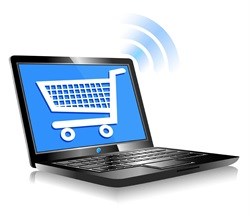
Subscribe & Follow
Advertise your job vacancies
E-commerce stores - Tips for choosing the right products
The first thing you need to do before opening an e-commerce store is to decide what exactly you want to sell. In addition, you need to figure out how you will access these products. With the myriad of options to choose from, finding the right products to sell can be a very frustrating task.
Here are some things you need to consider when deciding what to sell in your e-commerce store.
- Market trends
 © Fenton - za.Fotolia.com
© Fenton - za.Fotolia.comBefore selecting a product for your e-commerce store, take time to study the market trends. This will show you whether there is demand for the product you are targeting. There are several resources that you can use to can use for your research.
- Trade journals - In case you are planning to sell products related to a particular industry, it would be advisable to read relevant publications. This will give you an idea of what products are popular in that industry.
- Newspapers and magazines - Reading major newspapers and magazines will give you insight into what is trending. For instance, if companies are spending a lot of money to advertise a particular product, that could be an indication that it is in high demand.
- Product directories - Visit several product directories online to see listings by wholesalers and drop shippers. Most of these directories also have product prices and photos, thus making it easier for you to make a decision.
- Other stores - Have a look at several online stores that sell the products you are considering. Read customer reviews to find out what products are most popular.
- Trade journals - In case you are planning to sell products related to a particular industry, it would be advisable to read relevant publications. This will give you an idea of what products are popular in that industry.
- Target market
Also known as the target audience, this refers to the people you are planning to sell to. Getting familiar with your target market will help you make a better decision about your products. Here are some of the details you need to find out about your audience.
- Demographics - This refers to statistical details such as gender, age, economic status, residence and ethnicity.
- Psychographics - This focuses on the behaviors and attitudes of your target market. Understanding their demographics and personalities will give you a good idea of how to meet their needs and expectations.
- Price sensitivity - Can your target audience afford the products you intend to sell? You need to establish this before selecting a product for your e-commerce store.
- Demographics - This refers to statistical details such as gender, age, economic status, residence and ethnicity.
- Competitors
There are probably several other stores selling the same product you are targeting. Therefore, you need to take time to study the competition, and subsequently find ways of standing out. A quick online search will reveal other businesses that are selling the products you are targeting.
Visit their e-commerce stores to find out which products are featured prominently. Take note of other details such as site design, branding and product pricing. Another great way of learning more about your competition is by signing up for their email newsletters or connecting with them on social media.
- General market vs niche market
If you opt to sell a product for the general market, you will face fierce competition from other larger e-commerce sites in your industry, including giants such as eBay. Though it would be an uphill task, you can still experience some success with such competition. However, it would make more sense to focus on a niche market which is less competitive. For instance, instead of selling clothes to everyone, you can focus on selling clothes for pregnant women. Though the pool of customers is smaller, it will be easier for you to reach and engage your target market.
- Product costs
Price is a very important consideration when choosing a product for your e-commerce store. The price you charge customers will especially be influenced by the cost of sourcing the product. There are three main ways of obtaining products:
- Self-made products - When you make your own products, your product price will include the manufacturing, storage, labour and shipping costs.
- Drop-shipping - Getting products from a drop shipper helps you avoid the cost of keeping inventory. However, you will need to pay your product supplier 'drop fees', among other transaction costs.
- Buying directly from the manufacturer or wholesaler - In this case, your product price will incorporate the cost of getting the product, as well as storage and shipping costs.
- Self-made products - When you make your own products, your product price will include the manufacturing, storage, labour and shipping costs.
- Number of products
How many products are you planning to offer in your e-commerce store? Whether it is 5 or 500, it will have a significant effect on the effort and time required to build your store. Besides the number of products, you should also figure out if there are any extra product variations or accessories that need to be added.
The success of your e-commerce venture will be determined by what you decide to sell. Before plunging in, take time to consider the factors mentioned above. This will help you avoid wasting your time and money.




